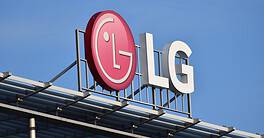Start-up companies have found a new form of financing that could potentially upend both the investment banking and venture capital industries: an “initial coin offering,” or ICO.
An inspired mixture of initial public offering, Kickstarter campaign and bitcoin, ICOs are a new way to invest—without Wall Street as the middleman.
Armed with only a plan and a dream, entrepreneurs go directly to the public to sell “coins,” typically called tokens. “There’s a lot more uncertainty when you invest in this,” says Paul Veradittakit, a partner at Pantera, a venture capital firm that invests in ICOs. “They are very early stage and sometimes there’s nothing there besides a white paper.”
Unlike an IPO, these tokens don’t give the buyer equity in the company. Instead, like Kickstarter, they reward the purchaser with a tangible product or service. “The tokens are traded on open markets and have a cash value,” says Emin Sirer, associate professor at Cornell University and co-director of the Initiative for Cryptocurrencies and Smart Contracts. “Say the token equals Web hosting for one month; depending on how well that company is doing, people may pay a premium for it.”
For companies, it is more profitable to get start-up funds from the public than from venture capitalists. Of course, VC serves a purpose. The firms provide due diligence, force founders to face tough questions and give money in stages to force founders to prove first, that a product works and second, that people will buy it.
The first ICO to launch was Mastercoin, in 2013, which raised $5 million worth of Bitcoins. A few hundred coins are launched per year around the world and the trading transcends national markets. Currently, there are between 600 and 1,000 coins, said Sirer, with a total market value of $100 billion. Coinmarketcap.com is a good place to see the most actively traded. “Most of these things have gone up in value,” says Spencer Bogart, head of research at venture fund Blockchain Capital. “But the market has gotten way ahead of itself. Six months ago, these offerings were $1 million to $15 million in size. Two weeks ago, one exceeded $270 million. It’s a classic bubble moment right now.”
Adds Bogart: “It’s disrupting the entire funding mechanism, from seed investors to the exchanges that publicly listed securities trade on.”



